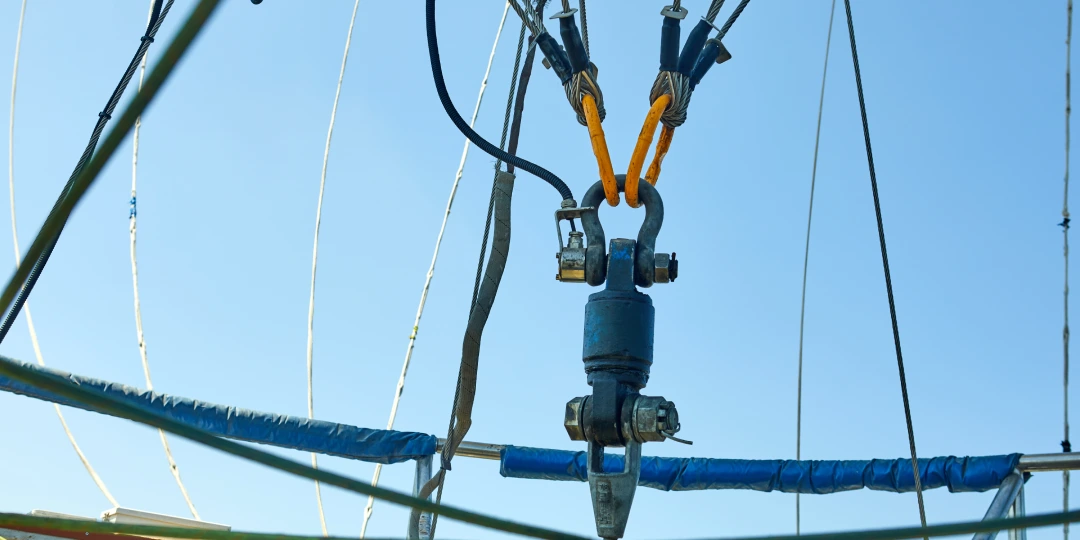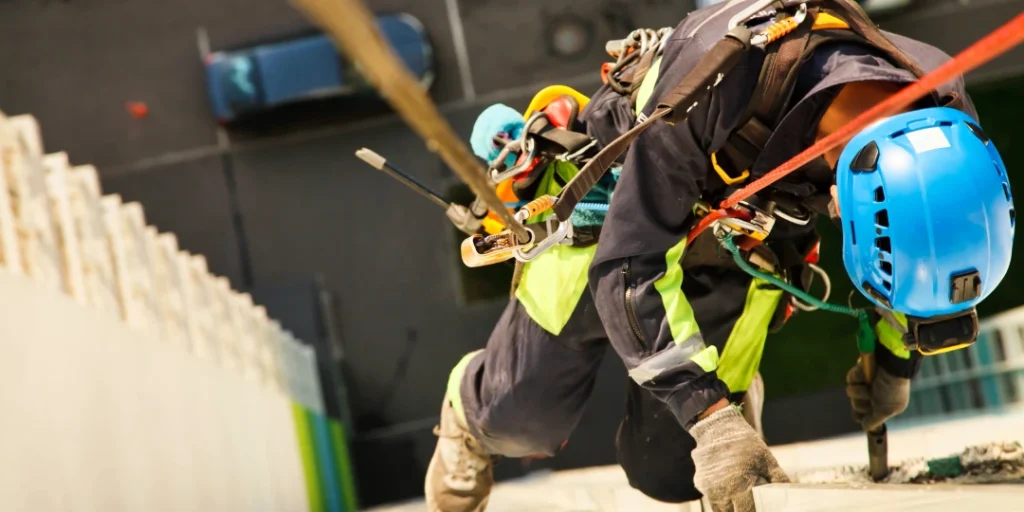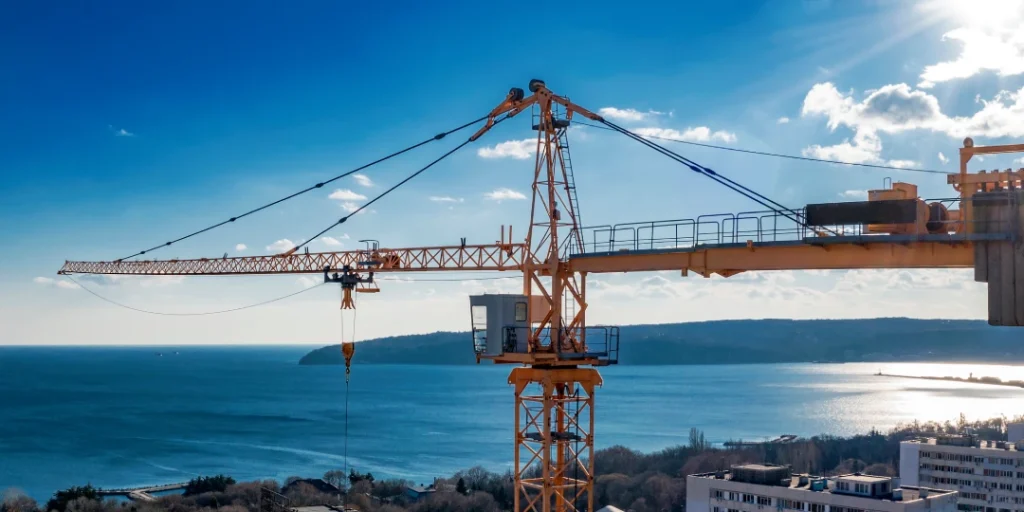Introduction: The Critical Role of Rigging in Industrial Safety
Rigging is foundational to industrial and construction projects, yet it often operates behind the scenes—out of the public eye, but never out of harm’s way. Each rigging operation involves a meticulous calculation of load capacity, tension distribution, environmental impact, and human error mitigation. The complexity and gravity of these lifts require a technical finesse that blends engineering knowledge with operational discipline. In this high-stakes environment, even the smallest misjudgment can result in structural failure, loss of equipment, or worse—serious injury or loss of life.
At Fortier Loss Control, rigging is treated not merely as a task but as a critical safety discipline. Their professionals approach each lift with a risk-aware mindset, aligning their operations with federal safety standards and internal best practices honed through years of on-site experience. Rigging is not just about moving objects from point A to point B—it’s about ensuring those objects move safely, predictably, and without introducing new hazards to a project environment. By viewing rigging as an integral part of the project’s safety ecosystem, Fortier elevates both performance and protection.
In Nashville, where development timelines are tight and project scopes are ambitious, the need for trustworthy rigging professionals is heightened. The city’s construction boom has introduced a greater volume and variety of lifts—from modular assemblies to fragile heritage elements—all of which require tailored rigging solutions. Fortier Loss Control fills this gap with a service model that prioritizes safety and precision over speed and volume. Their work underscores an essential truth in construction: the quality of a build begins with the quality of the lift.
Why Nashville’s Construction and Industrial Sectors Depend on Rigging Excellence
Nashville’s rapid urbanization has transformed the city into a complex construction landscape. Cranes dot the skyline, evidence of an unrelenting surge in new hospitals, sports arenas, high-rise apartments, and educational institutions. Each of these structures involves critical rigging phases that, if not executed properly, could derail timelines and compromise site safety. The importance of specialized rigging expertise in this setting cannot be overstated—it is the bedrock of Nashville’s evolving architectural identity.
For local developers and general contractors, rigging is more than a logistical hurdle; it is a compliance and liability issue. Regulations from OSHA, ANSI, and state-level agencies demand rigorous attention to rigging procedures. Inadequate documentation, improper lift planning, or unqualified personnel can trigger penalties and delays. Fortier Loss Control understands these pressures and provides more than technical service—they offer strategic risk mitigation tailored to Nashville’s construction codes and municipal requirements. This localized expertise is a major asset to firms working in the city’s competitive development market.
Moreover, Nashville’s topography and mixed-use zoning often present site-specific challenges such as tight urban corridors, nearby pedestrian traffic, and adjacent infrastructure. These constraints require adaptive rigging strategies that consider not only engineering principles but also urban flow and public safety. Fortier’s professionals excel at integrating these factors into their rigging plans, ensuring that lifts occur with minimal disruption and maximum control. Their presence on a job site translates into peace of mind for project managers who must juggle progress with precision.
Understanding Rigging: More Than Just Hooks and Cables
To the casual observer, rigging can seem like a straightforward process involving cables, chains, and a few hand signals. However, beneath the surface lies an intricate blend of science, mathematics, and human expertise. Every lift involves precise force calculations—analyzing angles, stress loads, and the shifting center of gravity. Even minor variances in rigging angles or tension can exponentially increase the load on a single sling or shackle. The process demands both theoretical knowledge and field-hardened judgment, making rigging a highly specialized discipline.
Each lift is essentially a custom-engineered solution. Factors such as wind velocity, surface integrity, equipment compatibility, and movement trajectories must all be accounted for in advance. There is no such thing as a “standard lift” in professional rigging—what worked on the last project may be completely unsafe in a different environment. This need for customization highlights the importance of expertise and planning. Fortier Loss Control approaches each rigging task as a standalone operation, thoroughly assessed and executed with scientific rigor.
Human coordination plays an equally vital role. A successful rigging operation requires seamless communication between crane operators, signalers, riggers, and project supervisors. Miscommunication or hesitation can turn a well-planned lift into a critical failure. Fortier’s teams are trained not only in equipment operation but also in real-time problem-solving and team-based execution. Their holistic understanding of rigging transforms what appears to be a manual task into a choreographed act of precision engineering.

The Hidden Costs of Improper Rigging Practices
The true impact of poor rigging extends far beyond immediate job site incidents. A single miscalculated lift can damage equipment worth hundreds of thousands of dollars, halt project timelines, and result in serious injuries or fatalities. These outcomes inevitably attract regulatory intervention, raising insurance premiums and inviting costly litigation. In a city like Nashville—where construction timelines are competitive and public scrutiny is high—the ramifications of rigging failure are amplified.
Indirect costs are just as damaging. A workplace accident affects more than balance sheets; it disrupts team cohesion, demoralizes workers, and sows doubt in the minds of clients. Safety breaches erode trust, making future collaborations harder to secure. Firms that overlook rigging safety often face increased turnover among skilled laborers and project managers, further destabilizing operational continuity. Over time, reputational damage can be more financially devastating than the initial incident.
Fortier Loss Control addresses these risks head-on. Their rigorous safety protocols and proactive planning eliminate the guesswork from rigging, ensuring that each lift is performed with full situational awareness and technical oversight. By safeguarding against failure, Fortier not only protects the job site but also preserves the long-term viability and credibility of the companies they serve. In this sense, their rigging services function as both a shield and an investment.
Fortier Loss Control: A Regional Leader in Risk-Engineered Rigging Solutions
Fortier Loss Control has emerged as a cornerstone of safety-driven rigging services across Middle Tennessee. Their operations are not reactive but meticulously engineered around risk assessment, safety audits, and environmental analysis. Every project begins with a detailed evaluation of lift parameters, followed by the development of a plan that accounts for both known and potential hazards. This engineering-led approach ensures that their solutions are grounded in logic and built for resilience.
What sets Fortier apart is their fusion of technical mastery and regulatory foresight. Their teams are fluent in both OSHA and ANSI safety standards and regularly integrate above-code practices to ensure optimal outcomes. From torque specifications to tension modeling, every aspect of their rigging plan is measured against industry benchmarks and internal controls. Clients working with Fortier know they are getting not just a service, but a risk-mitigation strategy embedded within their construction timeline.
Beyond technical execution, Fortier positions itself as a trusted collaborator. They function as embedded safety consultants—offering insights that influence broader project planning and jobsite configuration. Their role is not limited to lifting heavy materials; it includes shaping how safety culture is manifested across a construction lifecycle. This strategic orientation allows them to elevate not only physical operations but also the safety ethos of every team they partner with.
Training and Certification: The Backbone of Safe Rigging
In high-risk disciplines like rigging, the margin for error is vanishingly small. The difference between a flawless lift and a catastrophic failure often comes down to the competence of the personnel on the ground. Fortier Loss Control recognizes this fundamental truth and makes workforce training its cornerstone. Their riggers undergo intensive instruction rooted in industry best practices, covering everything from mechanical load calculations to advanced signal communication. Certifications from organizations like NCCCO (National Commission for the Certification of Crane Operators) are not just preferred—they’re required.
However, certification alone does not guarantee operational excellence. That’s why Fortier emphasizes a continuous learning model that extends beyond the classroom. Field personnel participate in recurring skill assessments, scenario-based drills, and post-project debriefings. These activities are designed to sharpen instinctual decision-making while reinforcing foundational knowledge. In this way, Fortier fosters a workforce that is not only qualified but situationally agile—capable of adapting to evolving site conditions without compromising safety.
Moreover, the company instills a culture of vigilance and accountability that permeates every job site. Each technician is trained to prioritize clear communication, respect load integrity, and follow procedural protocols without exception. At Fortier, safety is not an abstract ideal—it is a professional obligation supported by structure, habit, and a shared commitment to excellence. This deep-seated ethos ensures that every lift, no matter how routine or complex, is executed with unwavering attention to detail.

Pre-Lift Planning and Job Hazard Analysis (JHA): Fortier’s Proactive Approach
In rigging, preparation is everything. Fortier Loss Control’s operational doctrine centers on comprehensive pre-lift planning and the implementation of rigorous Job Hazard Analyses (JHAs). These evaluations are far more than bureaucratic checklists—they are precision instruments for identifying and neutralizing risk. Before any equipment is mobilized, the Fortier team meticulously analyzes lift variables, including weight calculations, lift radius, load geometry, structural limitations, and environmental factors such as wind and lighting.
This methodical approach removes ambiguity from the rigging process. By addressing potential complications during the planning phase, Fortier minimizes the need for on-the-spot improvisation—a common cause of site errors and safety breaches. Every lift plan includes detailed diagrams, staging protocols, and contingency measures. These documents are reviewed collaboratively with on-site teams, ensuring alignment and reducing the likelihood of communication breakdowns during execution.
Furthermore, Fortier conducts dry runs and safety briefings to reinforce situational awareness and instill confidence across all levels of the crew. This proactive framework transforms lifts from high-risk gambles into controlled, repeatable procedures. It also demonstrates Fortier’s respect for their clients’ timelines and reputations. By placing such a strong emphasis on pre-lift planning and JHAs, Fortier not only protects people and assets—they safeguard the integrity of the entire construction process.
Cutting-Edge Equipment and Technology Integration
Modern rigging demands more than muscle and experience—it requires technological fluency and access to state-of-the-art equipment. Fortier Loss Control distinguishes itself by investing in advanced tools that enhance safety, accuracy, and efficiency. Their inventory includes digital load monitoring systems capable of providing real-time tension feedback, wireless communication devices for enhanced site coordination, and 3D lift planning software that models rigging scenarios before boots hit the ground.
The use of technology extends to the equipment itself. Fortier deploys high-capacity cranes with programmable logic controls, articulating boom lifts that navigate tight urban corridors, and rigging hardware rated well above industry minimums. Every component is routinely inspected, calibrated, and replaced according to strict internal maintenance schedules. This prevents equipment fatigue and ensures optimal performance under pressure. Clients can rely on Fortier not only for skilled labor but for access to elite-grade machinery tailored to the unique demands of each project.
Technology also plays a pivotal role in incident prevention. By integrating data analytics and real-time telemetry into their operations, Fortier is able to monitor lifts dynamically and adjust for variances before they become liabilities. This capability is especially valuable in Nashville’s dense and unpredictable work environments, where last-minute changes and external pressures are the norm. Fortier’s fusion of human expertise and cutting-edge tech elevates rigging from a reactive task to a proactive, intelligence-driven discipline.
Partnering with Fortier: What Clients Can Expect
Engaging Fortier Loss Control means securing a collaborative partner with a deep commitment to operational safety and project success. From the initial consultation, Fortier’s team conducts an extensive site evaluation to understand not only the scope of the rigging task, but also the unique environmental, structural, and logistical challenges at play. Clients receive clear documentation, including custom risk assessments, lift plans, and safety compliance roadmaps. This preparation phase establishes transparency and ensures all stakeholders share a unified vision for safe execution.
Once on-site operations begin, Fortier provides ongoing supervision and technical oversight, deploying experienced personnel who remain embedded throughout the duration of the rigging activities. These professionals don’t just oversee the work—they engage directly with project managers, tradespeople, and safety officers to coordinate activities in real time. This integrated approach allows for quick adjustments, minimizes downtime, and ensures that safety is never sacrificed for speed. Clients benefit from a fluid exchange of information and a partner who is visibly invested in their success.
Beyond the lift itself, Fortier’s involvement continues through post-operation debriefs, incident prevention reviews, and strategic safety recommendations for future projects. Their holistic engagement model reflects a long-term mindset—one that seeks to elevate the safety culture of every company they work with. Fortier doesn’t just fulfill a contract; they enhance the credibility and operational integrity of the client organization. For Nashville-area developers and contractors, this translates into fewer surprises, smoother project delivery, and a measurable reduction in risk exposure.

Frequently Asked Questions

Conclusion: Raising the Standard for Rigging in Nashville
As Nashville’s construction and infrastructure boom continues, the demand for expert rigging has escalated dramatically. No longer a behind-the-scenes function, rigging is now a mission-critical discipline in the orchestration of safe and efficient project delivery. With increasingly complex urban projects, tighter timelines, and greater structural ambition, the margin for error in rigging operations has vanished. Fortier Loss Control stands at the forefront of this evolving landscape—redefining what it means to execute rigging with precision and foresight.
Fortier’s dedication to professional rigging safety is built on a foundation of advanced training, cutting-edge equipment, and a culture of proactive risk management. Their crews don’t just perform lifts; they engineer safety into every step, ensuring that every rigging operation meets the highest standards of performance and compliance. From detailed job hazard analyses to real-time monitoring, Fortier’s approach transforms conventional rigging into a strategic safety asset on every Nashville job site.
As the city’s skyline rises, Fortier’s impact on the rigging industry will only become more pronounced. Developers, general contractors, and project engineers are increasingly turning to partners who can deliver uncompromising safety and flawless execution. Fortier Loss Control continues to set the bar for rigging excellence—raising not just heavy loads, but the expectations and standards of an entire region.



